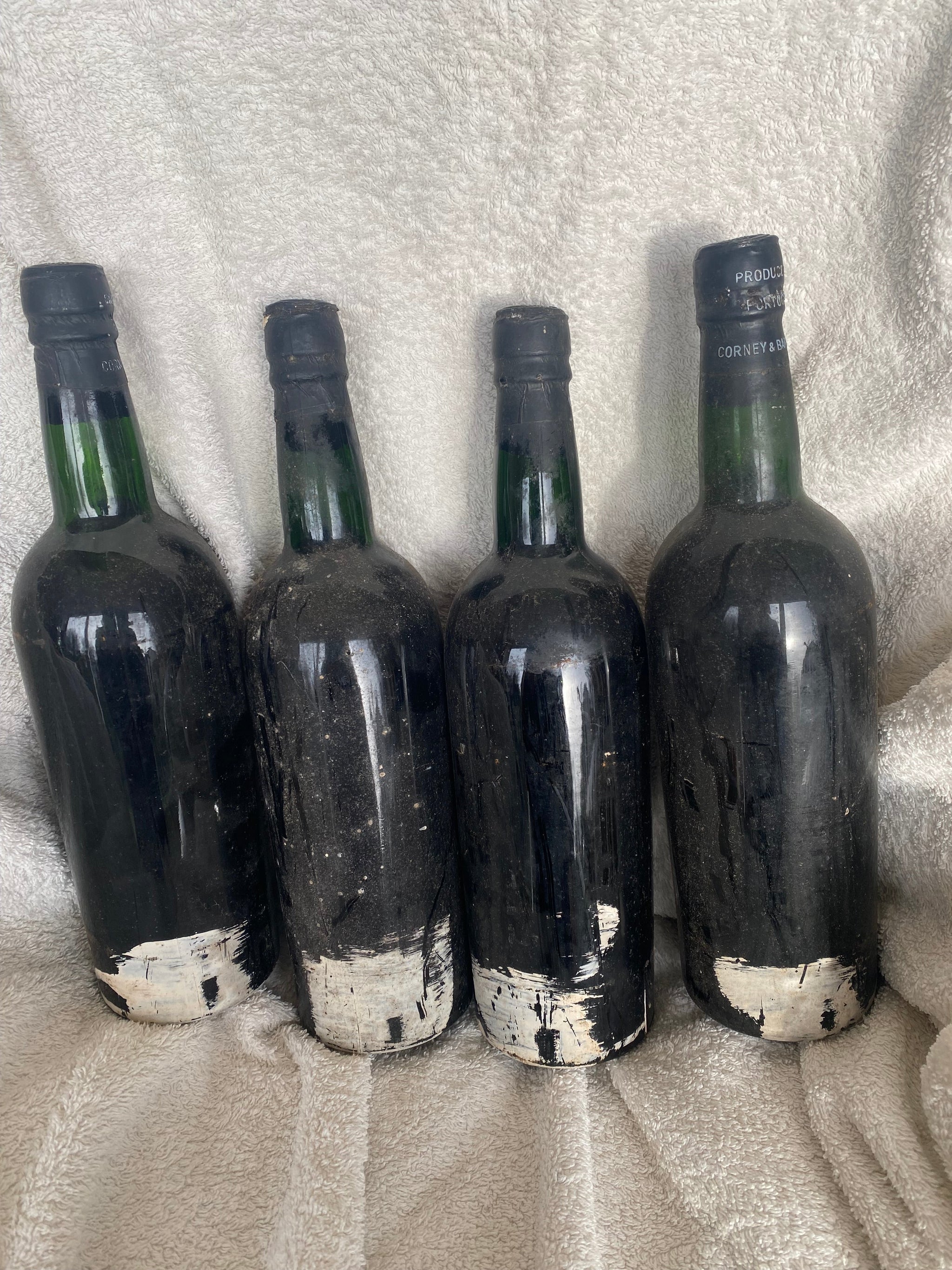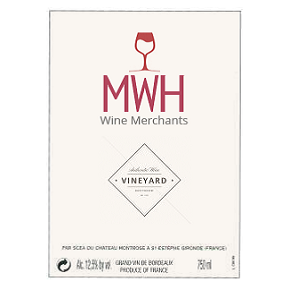2021 has been a remarkable year for fine wine investors. 17 months of continuous growth on Liv-Ex's 100 Index, and it finished the year 23% higher, while the FTSE 100 fell by 14.3% over the same period. It seems likely that 2021 will prove to be the Index’s best performing year ever as demand for fine Bordeaux, Burgundy, Champagne, and top-flight Italian wines such as Masseto remains strong.
So what does 2022 hold for the fine wine market? Will prices continue to rise, and if so, where do the opportunities for returns lay? In this latest blog from MWH Wines, the home of affordable fine wines, we’ll look at what’s happening in the market and share our thoughts on what might happen in 2022.
We hope you will find this of interest, if you’d like to get some advice on getting the fine wine that’s right for you, please get in touch. You can call us on 0118 984 4654 or email the MWH Wine team here.
The Burgundy Boom To Continue?
The wines of Burgundy have been at the vanguard of fine wine price rises over the past several years. While 2020 saw them fall back slightly, in 2021, they have regained their appeal, and the top wines have commanded ever-higher prices. As well as the Index-skewing Domaine de la Romanee Conti, domaines such as Rousseau, Leflaive, Leroy, and Meo Camuzet have seen sharp increases. With their tiny productions of impeccable wines, these producers have always been sought after, but on the back of great vintages such as 2019 and with talk of 2021’s harvest being tiny, it seems likely that new records will soon be set.
Bordeaux To Make Up Ground?
Since its establishment in 2003, the Liv-Ex 100 has been dominated by the wines of Bordeaux. This is hardly surprising given the massive volume of trades, collectors’ familiarity with the top châteaux, and that modern-day wine investment, which dates back to the mid-1990s and the explosion of interest in wine in Asia, began with Bordeaux.
Recently its fortunes have been mixed. In the wake of the financial crisis, the mania surrounding Lafite Rothschild subsided, and a run of moderate – at best – vintages left collectors unmoved. Add to that Latour’s decision to abandon the en-primeur (futures) market and other properties reducing their initial releases and the king of wine investment seemed to have lost its crown.
2021, though, has seen a revival in its fortunes. With the excellent 2018s becoming physical, a sensibly priced 2020 offering, and rave reviews for the 2019 wines of Bordeaux, interest has surged. Despite people asking whether climate change is killing Bordeaux with kindness, drinkers and collectors are revelling in the chance to buy wines from 2015, 2016, 2018, and 2019, while older classics such as 2009 and 2010 are getting the attention they deserve.
As is Bordeaux’s way, specific properties are more favoured than others. Lafite’s reputation is back in the ascendancy and was WineSearcher’s most sought-after wine of 2021. After a run of superb vintages, Mouton Rothschild is generating great interest, and that perennial favourite of investors, Latour, is soaring. Other trophy wines such as Petrus, Le Pin, Cheval Blanc, and Angelus have also risen. With the 2019s receiving favourable comparisons to 1982, 2022 could well be another vintage year.
Italian Renaissance
One of the exciting things about the wine investment market’s growth has been the emergence of new players. The Bordeaux-Burgundy duopoly has gone, and wines from Champagne, the Rhône, Australia, and Italy have muscled their way in. Demand for cult Italians such as Masseto, Sassicaia, and Solaia has never been higher. When you think about this, it makes perfect sense. Masseto has been described as ‘the Italian Petrus.’ While prices have risen sharply, they lag a long way behind Petrus itself and so leave plenty of room for growth, particularly if Petrus’s price continues to increase.
The inclusion of wines like these shows investors’ desire to find new routes for returns. Many believe that we’ll see more of this in the coming years as the traditional bankers from Bordeaux and Burgundy become increasingly unaffordable. We’ll be looking closely at Champagne, the flagship Australian wines, as well as things like Almaviva and Sena from Chile.
Rhône Returns?
While the likes of Guigal’s single vineyard Cote Roties, Chave’s Hermitage, Rayas, and rare wines like Henri Bonneau’s Reserve des Celestins, have been garnering lavish praise from critics and high prices at auctions, the wines of the Rhône haven’t traditionally been seen as of investment quality. Due partly to a lack of understanding of these often-idiosyncratic wines and their extremely long lives – Chave’s Hermitage in weak vintages will last 20+ years – they’ve been admired, collected, and drunk, but rarely invested in.
This is changing, and the limited release stars mentioned above, plus the likes of Hermitage La Chapelle, Beaucastel’s Hommage Jacques Perrin, and a few others, are on now investors’ shopping lists.
Seen by many as undervalued, this will be an interesting area to watch, not least in terms of which properties emerge as the must-haves.
Champagne: An Investment Bubble?
The prices of the finest Champagnes rocketed in 2021. Big-name wines such as Cristal, Dom Perignon, and especially vintage Krug saw huge prices, while boutique producers like Salon and Jacques Selosse became virtually impossible to find.
Prompted by a run of exquisite vintages – 2002, 2008, 2009, 2012 – and with older prestige cuvee from years like 1985, 1989, and 1990 entering their drinking windows, demand has become insatiable. Being arguably the savviest marketers in wine, the Champenoise have created new editions of their wines to open new luxury markets. You can now choose from a wide range of incarnations of Dom Perignon, including Plenitude 2 Rose, limited editions of standard bottlings by artists including Andy Warhol, Lady Gaga, and Bjork, Lenny Kravtiz, and Oenotheque are just part of this cuvee de prestige’s growing line up. Roederer has followed suit with older releases of Cristal, and wines like Bollinger Vieille Vignes Francaises are now retailing for over £800 a bottle.
What’s stoked this market is that Champagne wasn’t subject to the high tariffs that Trump imposed on many imported wines. This has led to a surge in demand from the US which has pushed prices to new heights.
Real World Economy Threats?
Whenever one talks about investments of any kind, it’s prudent to talk about the possible downsides. Wine has seen its fair share of bubbles as anyone who was trading pre-2010 will tell you. Over the past couple of years there’s been plenty of speculation that the Burgundy market would fall back, though thus far, at least, its continued to climb. While the pandemic has rocked the stock market it has buoyed the wine market, but when we do (finally!) see the back of Covid will prices tumble?
There’s also disquiet owing to rising interest rates. The UK’s rose in December 2021 to 0.25%, the first rise in three years, and most expect further hikes will follow. This makes borrowing more expensive and can offer savers safer routes to returns.
Finally, there’s the threat from climate change. In the short-term vintages are getting better in many marginal areas – Champagne, Bordeaux, Burgundy – but this is causing a glut of great wines and by changing the nature of the wines themselves, it could see drinkers and collectors look elsewhere or stick to the dwindling supplies of historic vintages. This is a phenomena we’ve already seen in the whisky market. Even standard bottlings of pre-millennium Macallan 10-Year-Old fetch high prices as its change in style isn’t to everyone’s taste.
Fine Wine Investment 2022: Growth In Store?
At the time of writing, the omens for wine investment are good. Scarcity, concerns over mainstream investment markets, and great vintages are fuelling demand. Fresh Covid fears and new markets opening up will likely see this trend continue for some time. Our advice, for what it’s worth, is buy the best you can afford, stick to tried and tested producers and diversify – ask investors who put everything into Lafite 2009 and 2010 and they’ll tell you that even racing certainties can fall.
Like Some Fine Wine Help?
We hope you’ve found this blog on wine investment in 2022 to be of interest, if you would like some wine advice then please do get in touch by calling Mike on 0118 984 4654 or by emailing MWH Wines here. A recognised authority on wine, he’ll be happy to advise you on which wine is right for you.

